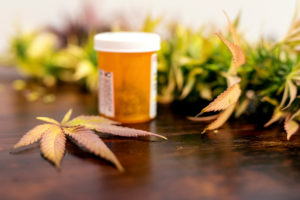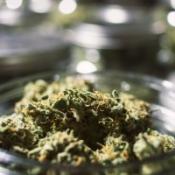 “What’s the big deal about smoking pot? It’s legal.”
“What’s the big deal about smoking pot? It’s legal.”
Have you or someone you know who uses marijuana said this? Did you know that marijuana is still federally illegal?
Marijuana has become more prevalent in today’s society. As a result, more teens and adults may believe smoking is nothing to be concerned by. They often use the argument that it is legal. In this article I want to clarify how some laws have changed at the state level and share some of the impact these changes can have.
Understanding Marijuana Laws
There is a difference between marijuana being legalized, decriminalized, and approved for medical use. As of May 2018, eight states and the District of Columbia have legalized marijuana for recreational use. Even where use is legal, you usually have to be over 21. It’s also generally not legal to smoke in public.
Legalization and decriminalization may sound the same. But they mean different things. These differences also vary by state. Where marijuana has been legalized, people who use it can no longer be arrested, ticketed, or convicted—as long as they follow state laws regarding age, location, and amount for consumption. It’s still possible to be arrested for selling or trafficking it if laws on sale and usage aren’t followed. Decriminalization means that possession of a small amount (enough for personal use) no longer carries a penalty, such as prison time.
Keep in mind that when federal and state law conflict, federal law trumps state law. So your state may allow use while the nation as a whole does not. The government classifies marijuana as a Schedule 1 drug. This is the strictest category. It means the government sees no medical value and a high potential for abuse. On the federal level, there are still criminal penalties attached. Even people over the age of 21, on private property, in one of the states where marijuana is legal, may still face significant legal consequences. These might include a fine or even jail time.
Federal law states that it is illegal to use, possess, cultivate, or distribute marijuana. The Drug Enforcement Agency typically focuses on dispensaries and distributors. But consider what might happen if you were caught smoking a joint in a park, near a monument, or on other federal property?
The mandatory minimum sentences are below:
- First offense: A misdemeanor involving up to a year of incarceration and a $1,000 fine.
- Second offense: A misdemeanor involving a mandatory minimum of 15 days (and up to two years) of incarceration and a $2,500 fine.
- Third offense or more: A misdemeanor or felony involving a mandatory minimum of 90 days (and up to three years) of incarceration and a $5,000 fine.
Effects of Marijuana Use
Data is starting to come in from the first states that have decriminalized the use of marijuana. The Washington Traffic Safety Commission recently reported how current marijuana use is impacting roads:
- Marijuana-impaired driving fatalities have more than doubled.
- One in five drivers are under the influence of marijuana. This is an increase from one in 10 prior to legalization.
- More than two-thirds of people who reported using marijuana and operating a motor vehicle said they didn’t think it affected their ability to drive at all.
The Commission also found that almost 17% of marijuana users said they used it daily. Among marijuana users between the ages of 15 and 20, more than half said they believed marijuana helped them drive.
Many proponents for legalization believed it would lower alcohol consumption. Yet the most common combination of drugs on the toxicology reports of those killed driving was marijuana and alcohol. This report also found that drivers who admitted to operating a vehicle within three hours of using marijuana were also more likely to drink and drive, not wear a seat belt, and binge drink.
In 2018, Smart Approaches to Marijuana published “Lessons Learned From Marijuana Legalization in Four States and D.C.” The four states they studied included Colorado, Washington, Oregon, and Alaska. Findings included the following:
- Past month usage of marijuana in youth 12-17 years old is above the national average.
- First-time marijuana use in adolescents occurs the most in Colorado. Use has increased 65% since their laws changed.
- Young adult marijuana use is going up.
- Toxicology reports of teen suicides show higher rates of marijuana use.
- Alaska saw a significant increase in school suspensions related to marijuana use.
- Half of adolescents in substance use treatment are there as a result of marijuana use.
Other recent data includes:
- The Colorado Department of Revenue found that drinking has gone up by 8%. In other words, alcohol use is increasing, not going down.
- Poison Control Centers report a rising number of calls for marijuana-related overdoses. These overdoses are often due to edibles. Children or pets may eat them, thinking they are a safe treat.
- Rates of some crimes, such as property damage, vehicle theft, and larceny, appear to be rising.
These are statistics that many find surprising and frightening. We can use them to examine the results of legalization and consider how nationwide legalization of marijuana might affect the rest of the country.
I’ve dedicated over two decades to helping people who are struggling with the effects of substance use. I do agree there are some medical uses for marijuana, which is legal in 29 states as well as Washington, D.C. Cannabidiol has a number of health benefits. It can help relieve pain, nausea, and inflammation. People with cancer, epilepsy, and cerebral palsy may be prescribed marijuana for these reasons.
But these benefits come in the form of cannabidiol, not tetrahydrocannabinol (THC). THC causes a psychoactive high, but cannabidiol is non-intoxicating. You don’t have to smoke cannabidiol. It comes in oil, pill, and edible form. A person using it will get the benefits without the the psychoactive properties or the dangerous effects of the smoke. Thus, true medical marijuana, which is prescribed and monitored by a doctor, can offer benefits to users without the potentially harmful effects listed above.
If you think marijuana use might be having a negative impact on your life, consider reaching out to a compassionate, qualified professional today.
References:
- Hill, K. P. (2015, February 23). Marijuana: The unbiased truth about the world’s most popular weed. Center City, MN: Hazelden Publishing.
- Lessons learned from marijuana legalization in four states and D.C. (2018). Smart Approaches to Marijuana. Retrieved from https://learnaboutsam.org/wp-content/uploads/2018/03/SAM-Digital-C-4.pdf
- Lopez, G. (2018, January 5). The Trump administration’s new war on marijuana, explained. Vox. Retrieved from https://www.vox.com/policy-and-politics/2018/1/4/16849866/marijuana-legalization-trump-sessions-cole-memo
- Marijuana as medicine. (2018). National Institute on Drug Abuse. Retrieved from https://www.drugabuse.gov/publications/drugfacts/marijuana-medicine
- Marijuana use, alcohol use, and driving in Washington state: Emerging issues with poly-drug use in Washington state. (2018). Washington Traffic Safety Commission. Retrieved from http://wtsc.wa.gov/wp-content/uploads/dlm_uploads/2018/04/Marijuana-and-Alcohol-Involvement-in-Fatal-Crashes-in-WA_FINAL.pdf
- Whiting, P. F., Wolff, R. F., Deshpande. S., Di Nisio, M., Duffy, S., Hernandez, A. V., Keurentjes, J. C., Lang, S., Misso, K., Ryder, S., Schmidlkofer, S., Westwood, M., Kleijnen, J. (2015). Cannabinoids for medical use: A systematic review and meta-analysis. Journal of the American Medical Association, 313 (24). doi: 10.1001/jama.2015.6358
© Copyright 2018 GoodTherapy.org. All rights reserved. Permission to publish granted by Cyndi Turner, LCSW, LSATP, MAC, GoodTherapy.org Topic Expert
The preceding article was solely written by the author named above. Any views and opinions expressed are not necessarily shared by GoodTherapy.org. Questions or concerns about the preceding article can be directed to the author or posted as a comment below.

 Marijuana Use May Spark Substance Abuse, But Not Anxiety
Marijuana Use May Spark Substance Abuse, But Not Anxiety Puff or Pass? Medical Marijuana and Chronic Illness
Puff or Pass? Medical Marijuana and Chronic Illness Is Marijuana an Effective Treatment for Chronic Pain?
Is Marijuana an Effective Treatment for Chronic Pain?